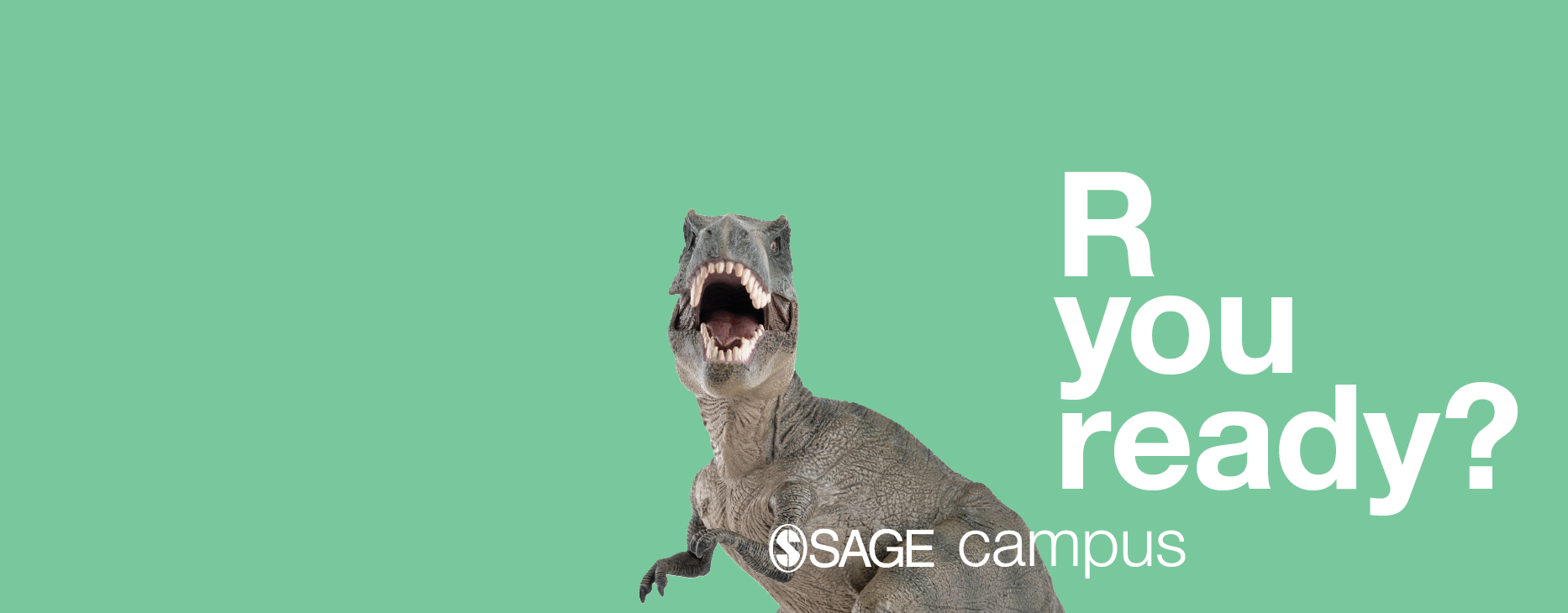In this guest blog, Charlie Joey Hadley, the instructor of the SAGE Campus Interactive Visualization with R online course discusses why faculty need to stop teaching the Frankenstein monster of combining Excel, R and MS Word - and instead teaching using RMarkdown.
Read our guest blog by Dr Zina O’Leary, Senior Fellow at the Australia and New Zealand School of Government and internationally-recognized leader in research methodologies. Zina discusses the importance of choosing and adapting the right research question before delving into research too quickly.
In this guest blog, Dr Tom Chatfield, the author of the SAGE Campus Critical Thinking online course, discusses how critical thinking is built into the foundational skills elements of all kinds of higher education courses.
This post is an interview with John MacInnes, the expert instructor and author of SAGE Campus’ upcoming Statistical Significance, See Numbers in Data, Understand Probability, and Know Your Numbers online courses, launching in 2021.
In this guest blog, Charlie Joey Hadley, the instructor of the SAGE Campus Interactive Visualization with R online course explains how to use R for reproducible data workflows with RMarkdown and RStudio projects.
In this guest blog, Dr Tom Chatfield, the author of the SAGE Campus Critical Thinking online course, discusses how faculty and instructors can best use online courses as to support their teaching.
Read our next post in a series of guest blogs by Dr Zina O’Leary, Senior Fellow at the Australia and New Zealand School of Government and internationally-recognized leader in research methodologies. Zina is the author of SAGE Campus’ upcoming Present Your Research, Research Proposal and Research Question online courses, launching in 2021. In this blog she discusses how to more influential when presenting your research.
In this guest blog, Dr Zina O’Leary, instructor and author of our upcoming Research Question, Research Proposal, and Present Your Research online courses discusses the steps to communicating with impact when presenting research.
In this guest blog, Dr Tom Chatfield, the author of the SAGE Campus Critical Thinking online course, discusses why critical thinking is an important skill for students - and why institutions must urgently equip students with these skills.
In this guest blog, Professor Julie Scott Jones, Head of Department of Sociology at Manchester Metropolitan University, discusses the challenges in teaching quantitative methods - and how this changes when you’re teaching remotely on Microsoft Teams.
By Jae Yeon Kim, computational social scientist and PhD candidate in Political Science at UC Berkeley, writes this guest blog on getting undergraduates involved in real-life data science projects; connecting them with community impact groups, entrepreneurship ventures, and educational initiatives to provide them with hands-on and team-based research opportunities outside the classroom.
Creating good content is an age old challenge for educators. And this challenge is only exasperated when the content you’re creating is online. Last month, we published a guest blog by Tom Chatfield on lessons he learned when creating Critical Thinking: An Online Course. In this blog, we expand on Tom’s lessons from our perspective as editors of SAGE Campus online courses.
Watch the free 1 hour webinar recording by Dr Taha Yasseri of the Oxford Internet Institute to learn about the role of natural experiments in social data science and see his answers to your questions.
What do the most useful online resources look like and do? This has become a more urgent question than anyone dreamed even a few months ago. Tom Chatfield shares tips on creating good online learning from his experience creating the SAGE Campus course Critical Thinking: An online course.
In response to the COVID-19 outbreak, many universities around the world are having to switch to online teaching and remote learning at scale and at speed. A wealth of digital resources exist that can support this sudden shift to online but knowing what ‘good’ online learning looks like has never been easy. This shares five lessons we’ve learned from working with universities about what worked for them, and what sometimes surprised them about student engagement.
Technology and digitization are changing the world we live in and, consequently, what skills are required from our future workforce. It is becoming increasingly important for social science graduates to be data literate to be employable and successful. So, what exactly does the future social science graduate look like and what must institutions do to ensure their students excel?
Higher education institutions traditionally used SPSS when teaching social science. But there’s a shift toward R; a programming language and free software environment for statistical computing and graphics. Find out the top reasons why your institution should switch to R.
What is social data science and how is it done? Taha Yasseri, course instructor on the SAGE Campus Research Design in Social Data Science online course, explains the big data-driven approach to social science research that everyone is talking about.
Dr. Maja Založnik, Research Fellow at the Oxford Institute of Population Ageing, answers questions from SAGE Campus’ recent free Introduction to R webinar about the R programming language.
The ability to work with digital research methods and data analysis is opening up a whole new world of research potential for social scientists. Dr. James Allen-Robertson, Digital Sociologist at the University of Essex, tells us how computational social science has given him and his research output a new lease of life.



















